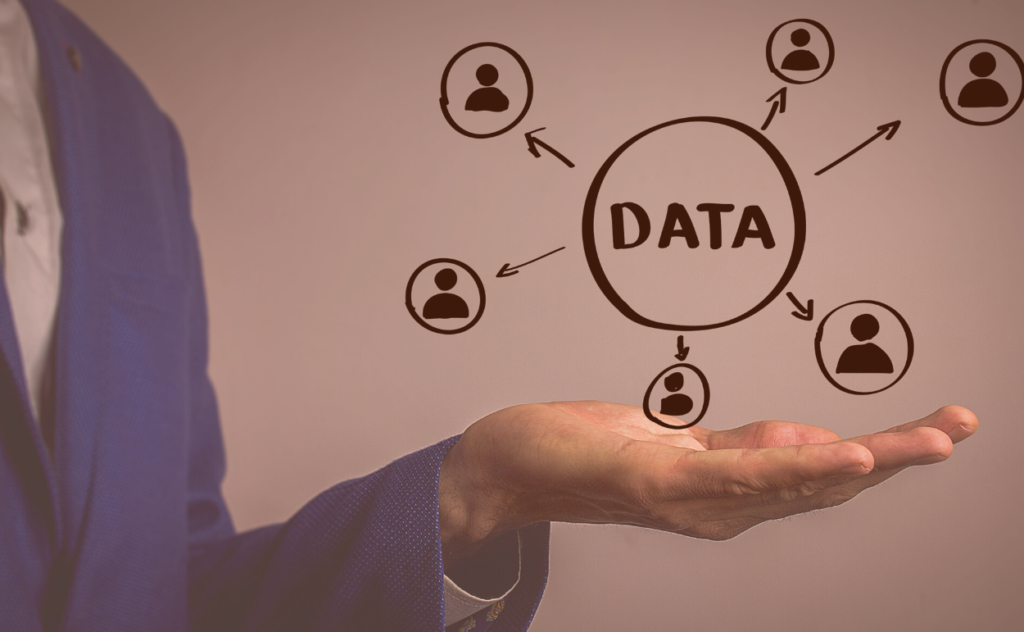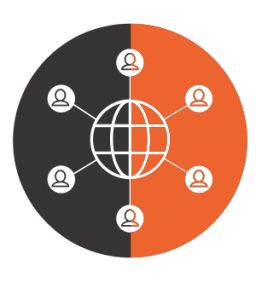
Do you ever feel like a lot of running a business is just guesswork? You guess at how much to price an item for, you guess on what the best way to approach a problem is, you guess how many of a certain item you need to order, and you guess at what causes mistakes in your company. What if there was a tool that could get rid of all the guesswork and help you choose the best thing for your business every time? Big data analytics is a way to look at every aspect of your business and find the best way to make things work. It can help you optimize everything from your loss prevention programs to your product innovation processes. Read on to learn more about big data analytics and what it can do to help your business grow.
What Is Big Data Analytics?
In a nutshell, big data analytics is the process of looking at huge collections of information to find patterns. These patterns may have to do with how many people buy hamburgers on Tuesdays versus Saturdays, or they may focus on how many people add fries to that burger order. Insights like this can help companies optimize their processes and increase their revenue. In the old days, big data analytics was done on spreadsheets with pens and paper. These days, that process is entirely done on the computer, from gathering the data to running reports to interpret it. Some AI and machine learning programs are even beginning to take over some of the analysis.

How It Works
Big data analytics is far too big to limit itself to one sort of technology. A variety of technologies work together to provide the most accurate and efficient analysis/ Data mining gathers huge swaths of information for data scientists to work with. Data management helps to optimize these processes through an efficient organization. Machine learning is a specific subset of AI that allows analysts to examine bigger and more complex data sets.
Who’s Using It
Nearly every industry can benefit from big data analytics. Everyone from retail, banking, and manufacturing to life sciences, health care, and the government are using this technology. Life sciences can use big data analytics to streamline their research procedures and make more research projects financially possible. Health care uses big data analytics not only to manage things like patient records and insurance claims but also to improve diagnoses and treatment options. The government can use big data analytics to improve their efficiency and cut budgets without losing effectiveness.
Better Response to Customers
One of the biggest challenges of retail is trying to figure out what your customers need – often before they even know it. It can feel like you’re stuck throwing spaghetti at the wall and seeing what sticks. And that can cost you customers and lots of revenue. Big data analytics can give your customer response strategy some definite structure. You can look at why customers have left before and what has enticed them to come back and spend more money. Retaining just 5 percent more of your customers can increase your profits by anywhere from 25 to 125 percent. 
Machine Learning-Based Revenue Growth
One of the biggest advantages of machine learning is that it makes it much quicker and easier to analyze more involved sets of data. A computer can handle as many as two billion operations a second. This means that in a few minutes, it can move through data sets that would take a human analyst year. Because of this improved speed, your company can look for more and more minute revenue trends and figure out how to capitalize on them. Let’s say a fast-food chain uses machine learning to figure out that when they run a Twitter ad for hamburgers at noon on a Thursday, their hamburger sales increase by a half a percent. That one half-percent increase could mean a huge jump in revenue year over year, and without machine learning, they never would have been able to spot that trend.
Loss Prevention
Loss prevention is one of the most important initiatives for retailers, and big data analysis promises to help. For one thing, as we’ll discuss more in a minute, big data analysis can help generate better pricing to reduce people’s desire to steal. But it can also help companies figure out how to better manage loss prevention in their stores. Big data analytics can look at when and where items disappear. It can figure out if there are certain areas of a store where more items disappear or if items in a certain size or color should be watched more carefully. It can also look at stores that do better with loss prevention and figure out which of their approaches is most effective.
Better Pricing
Pricing is another one of those things that can feel too much like a guessing game for comfort. You have to find the perfect balance between beating the competition and still turning the maximum profit possible. Big data analysis can help you pinpoint the perfect prices for your products. Big data analytics can look at all the prices for an item in an industry and compare which ones get the highest sales. Depending on the data you have available, you may even be able to look at what profit a company turned on that product. Using this information (and information about your customers and practices) you can find the price that will work best for you and your customers.
Better Product Innovation
Product innovation is a risky business; too little innovation and you fall behind, and too much innovation and you lose money. How do you know before you develop a bold new product that’s going to land well with your customers? Big data analytics can give you an idea of how a product will be received before you ever begin development. Big data analytics can also help you predict your customers’ needs. You may be able to analyze the previous purchases your customers have made and figure out what other sorts of products they might need in their lives. So, for instance, if your customers have bought subscription boxes, murder mystery books, and quilting fabric, you could create a murder mystery quilt-along that will be a hit with your customers.
Streamlined Product Roadmaps
Once you get brilliant new product ideas, you have to be able to put them into production. This means more trial and error while you figure out the best way to design and manufacture your product. And delays like that can be costly. But data analytics can help you streamline those processes from the word “go.” You can learn from previous competitors’ mistakes by analyzing products that were recalled or rejected or materials that didn’t work for the company. That way you’re already starting at an advantage on your new product.

More Efficient Product Configurations
You have your new product designed and built, and now it’s time to roll it out on the shelves! But where in your store should you place it? The answer is not “The shelf that has the most available space.” Store layouts and product configurations can have a huge impact on what customers buy. Using big data analytics can help you figure out the best place to display a product to maximize its sales. It may only increase your sales by a percentage point or two, but with your whole store optimized, those profits can start to add up.
Reduced Errors
Have you ever shipped out a batch of orders only to realize that two of them got switched or one had a piece in the wrong size or color? Such mistakes can be costly, both in shipping and in customer retention. Big data analytics can help you avoid these errors and save a lot of money. You can use big data analytics to look at where mistakes happen in your system and make a plan for how to remedy these. You can look at companies that have had similar issues and figure out a set of the best practices based on their mistakes. You can also get a feel for what your clients expect from your company so you can address dissatisfaction before it ever occurs.
Improved Upselling and Cross-Selling
Upselling and cross-selling are two of the biggest opportunities for revenue growth. It’s the reason every fast-food worker asks you, “Would you like fries with that?” And big data analytics can help you figure out what items to pair for upselling and cross-selling opportunities. You can look at buying patterns with big data analytics and figure out which items most often sell together. You can also look at items your customers have previously bought from you and figure out which items you should advertise to them. This could even help you decide how to expand your product lines.
Better Order Management
When you order items for your store, it’s always on a wing and a prayer that you order the right number. You don’t want to wind up short and have to deal with delays, backorders, and lost revenue. But you also don’t want to find yourself at the end of the year sitting on 99 percent of the stock you ordered. Big data analytics can help you optimize your order management so you wind up with the perfect number of each item. You can look at how much you sold last year and how much your sales have increased year over year. You can also look at how well that particular product sells industry-wide and use those numbers to figure out your order quantities.
More Efficient Advertising
In the old days, advertising was a magnitude game. You tried to get your message in front of as many eyeballs as possible, no matter whether those eyeballs belonged to interested potential customers or not. But the rise of integrated marketing communications has led us away from that sort of mass advertising in favor of a more efficient system. Big data analytics can show you exactly where your customers are and how you can best reach them. You can see which advertising campaigns have performed best and nail down a specific target demographic to advertise to. This helps you spend your marketing efforts on people who are actually likely to be customers and not waste money on people outside your target demographic.
Improved Risk Management
Running a business is about taking risks, but it’s about taking the right risks. You need to know when to take the plunge on a new product, approach, or storefront and when to hold your cards. Big data analytics takes the guesswork out of that process. You can look at previous companies that have been in the same situation as you and see how they performed on each side of the issue. If they failed, you can look at why so you can avoid the same pitfalls. And if no one has succeeded when they’ve taken that risk, you can move on down the road secure in the knowledge that you’ve made the best decision for your business.

Learn More About Big Data Analytics
Big data analytics is an invaluable tool for just about every industry. It takes the guesswork out of every part of business, from what products to order to how to manage your internal processes. Get analyzing and start working smarter, not harder, for your business. If you’d like to get the insights big data analytics can bring you, reach out to us at Boost Labs. We love creating ways to view data, interact with it, and share it in ways that empower our clients and their stakeholders. Learn more about our services and start making your business the best it can be today.
